The debate over gas stoves has become highly disputed with political and social implications.
In this article, we will explore the potential risks associated with gas ranges and the challenges associated with transitioning to induction cooking.
While gas stoves emit toxic emissions, completely banning their use may not be a practical solution when considering the amount of power required.
We will also discuss simple steps that can be taken to reduce exposure to hazardous fumes and protect the health of you and your family.
Let's dive in.
Looking for answers about Induction Cooking?
Short on time? Download our free Induction Cooking Buying Guide.
The Problem with Gas Ranges
Gas ranges emit a mixture of undesirable fumes, including carbon monoxide, nitrogen dioxide, formaldehyde, and particulate matter, at higher levels than induction or electric ranges.
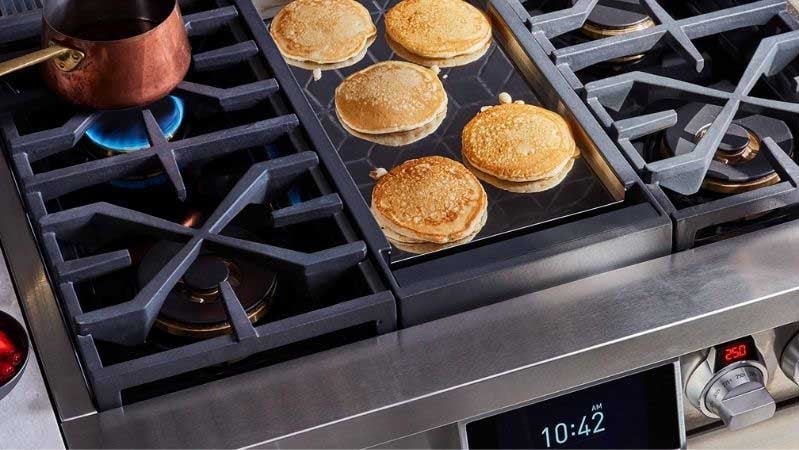 Gas Range Stovetop
Gas Range Stovetop
Nitrogen dioxide, in particular, has been linked to respiratory problems in both children and seniors, according to the EPA (Environmental Protection Agency).
Although the issue of gas ranges being harmful is not new, it has gained more attention in recent years due to the higher output of modern gas ranges and changes in home construction methods.
Personally, I grew up in the 1970s and 1980s with a Caloric hi-low gas range that lacked proper ventilation. My friends and I all had similar setups with hoods ill-equipped to handle the exhaust from our stoves.
As studies reveal the negative impact that gas cooking can have on indoor air quality and our health, it's more important than ever to take steps to reduce exposure to harmful pollutants.
When I started at Yale in 1986, Whirlpool had just started manufacturing a gas range with three 9,000 BTU burners and a simmer burner at 5,000 BTU. However, the front burners on the gas range average 15,000-20,000 BTU today, and I'm not referring to the higher output pro range types.
This means that modern burners emit far more of the gases you don't want in your home.
But that's only part of the problem. Take my old home in Needham, for example. It was not designed to the standards of today's buildings and was much draftier.
Nowadays, homes have much better windows and other materials designed to keep the air inside your home while not allowing outside air in for greater efficiency.
However, when you cook, those gases will stay in your home longer, unlike the older, draftier spaces like my old house. So, you have problems with cooking, especially gas cooking, along with more output and new houses designed to keep those gases inside your home.
While banning gas ranges may seem like a logical solution considering all these factors, it presents a significant challenge as it would require a massive increase in electricity generation.
In the United States, roughly 40 million homes have gas stoves. The country would need 1 billion extra amps to convert to electric or induction cooking, which would require many solar panels or wind turbines.
Currently, the United States has more than 2.7 million residential solar panels and 89,000 wind turbines, making a full conversion to electric or induction cooking seem unfeasible without a comprehensive plan to build more renewable energy sources.
Read More: Why Are Gas Ranges Being Banned?
The Challenges of Shifting from Gas Stoves to Induction Cooking
Converting from a gas stove to an electric or induction stove isn't as simple as swapping out appliances. It requires rewiring your stove.
You must change the outlet and wiring from a 15-amp 120 line to a 240-volt 40-amp line:
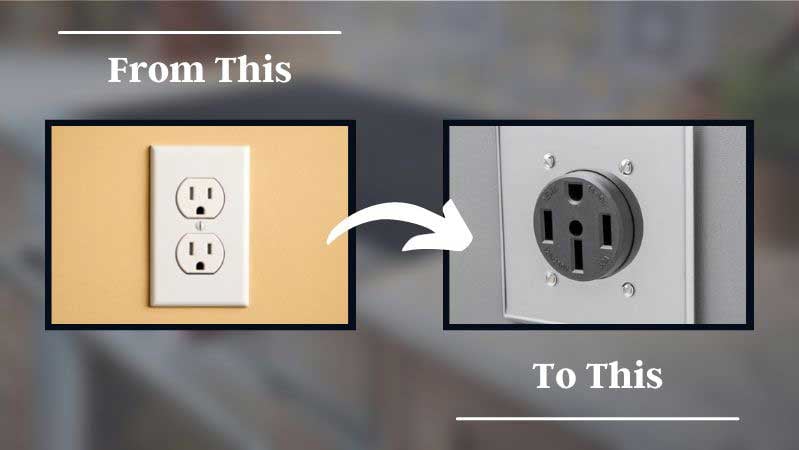
This involves significant electrical work and may also require a new electric box, which can be expensive and challenging to install. In some cases, it may not even be possible, especially in older condo buildings with power limitations.
When it comes to induction stoves, you may need to upgrade to a 50-amp circuit to avoid power spikes, as the range will use the entire 40-amp circuit.
This further adds to the cost and complexity of the conversion. The approximate cost of the rewiring and installation can range from $3,000 to $3,500.
Additionally, finding an electrician to do the work can also be a challenge, as there is currently a shortage of industry experts in many areas.
Given the difficulties and expense of converting to electric or induction, improving the air quality in your home may be a more feasible solution.
In the next section, we will discuss effective ways to ventilate your kitchen and protect your family's health.
Improve the Quality of Air in Your Home Through Kitchen Ventilation
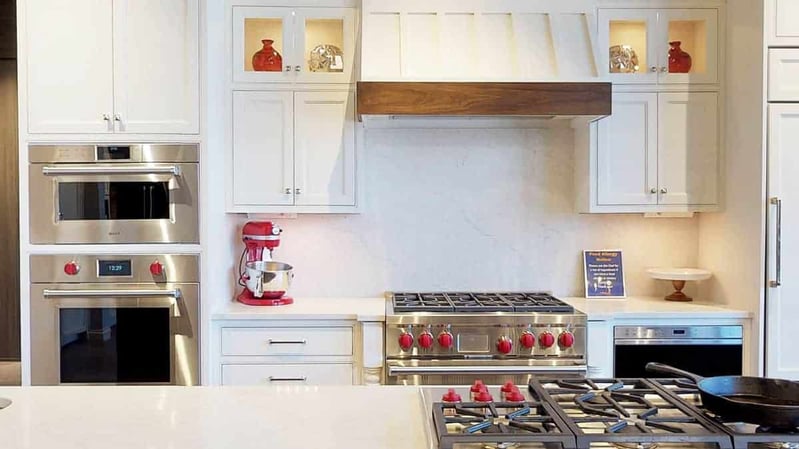 Kitchen Range with a Custom High CFM Range Hood
Kitchen Range with a Custom High CFM Range Hood
Venting your kitchen range is important to ensure that your indoor air quality is not affected by the fumes and gases produced during cooking.
However, not all vents, such as downdrafts, over-the-range microwaves, and many shallow hoods, work efficiently.
Here's what you need to do to properly vent your range:
1. Choose the Right Exhaust Fan
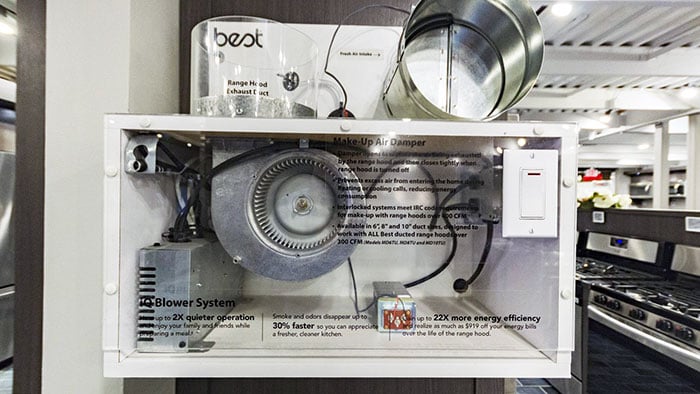 Range Hood Exhaust and Blower System
Range Hood Exhaust and Blower System
The effectiveness of an exhaust fan is measured in cubic feet per minute (CFM), which is the volume of air exhausted per minute.
For a 30-inch stove, a 600 CFM exhaust fan is recommended if you cook frequently. Larger ranges, such as 36, 48, or 60 inches, will require higher CFM exhaust fans.
The cost difference between a 600 CFM and a 1200 CFM exhaust fan is insignificant.
2. Pay Attention to the Capture or Depth of the Hood
The capture or depth of your range hood is a critical aspect of venting that people often overlook. High-output burners are usually in the front of the range, so the hood must cover them at about 23 inches.
If the hood is not deep enough, the fumes and gases produced by the burners will bypass the hood, regardless of the CFM rating.
3. Choose the Right Duct Run
Regarding the duct run, there are two options: venting straight up or straight back. Venting straight up is the better option because smoke rises.
Moreover, you want to avoid using too many elbows or transitions in your duct run, as they can diminish the flow of exhaust.
By following these steps, you can ensure that your kitchen range is properly vented, which will help to keep your indoor air clean and healthy.
Read More: How to Vent Your Kitchen Range
What You Can Do If You Can't Properly Vent Your Kitchen Range
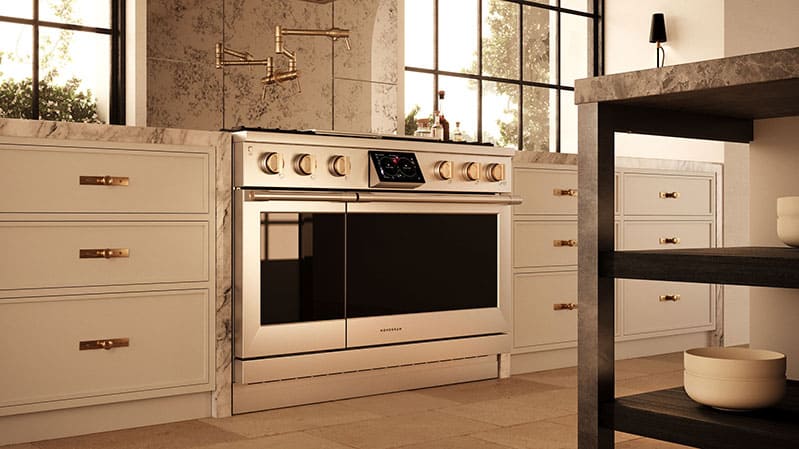 Professional Range
Professional Range
If good venting is not possible due to space or budget constraints, there are a few things you can do to improve the air quality in your kitchen:
- Always turn on your vent or range hood when cooking. Even if it's not the best venting solution, it will still help to remove some of the smoke, steam, and cooking odors from the air.
- Open windows to bring in fresh air from outside. This will also help reduce the smoke and cooking odors in the air.
- Cook on the back burners of your stove whenever possible. The back burners produce less heat and smoke, making it easier to vent with shallower hoods.
- Consider switching to an induction or electric stove, which doesn't produce smoke or combustion gases as a gas stove does. Remember that induction stoves require up to 50 amps of power, compared to less than 12 for gas stoves.
If you are unable to vent your kitchen, some alternatives can help. For example, you can purchase an air cleaner that can handle VOCS, like the Sharp Plasmacluster, with ion charging.
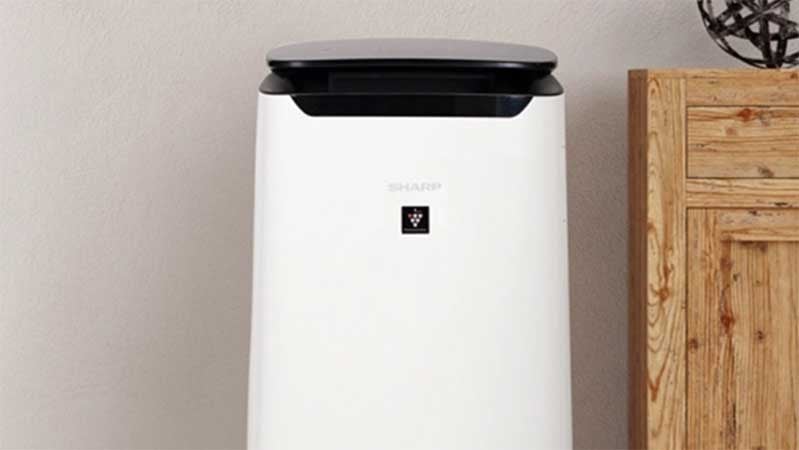 Sharp Plasmacluster
Sharp Plasmacluster
Additionally, a portable induction hob can be used to cook in a well-ventilated area, such as under an over-the-range microwave, to improve the air quality in your kitchen.
Remember that a 120V induction cooktop is only suitable for light cooking and may not be sufficient for boiling large pots of water or cooking heavy meals.
Key Takeaways
In conclusion, converting to gas or electric/induction can be a challenging and expensive task. However, proper venting is crucial in minimizing the harmful gases emitted during cooking.
We recommend watching this video on the best vents to consider:
Remember to use your vent whenever you cook, and if venting is not an option, try opening windows to let fresh air in. Your family's health is worth the extra effort.
Additional Resources
Get The Yale Ventilation Buying Guide with features, specs, and inside tips for every brand and hood type. Well over 1 million people have read a Yale Guide.
Related Articles:


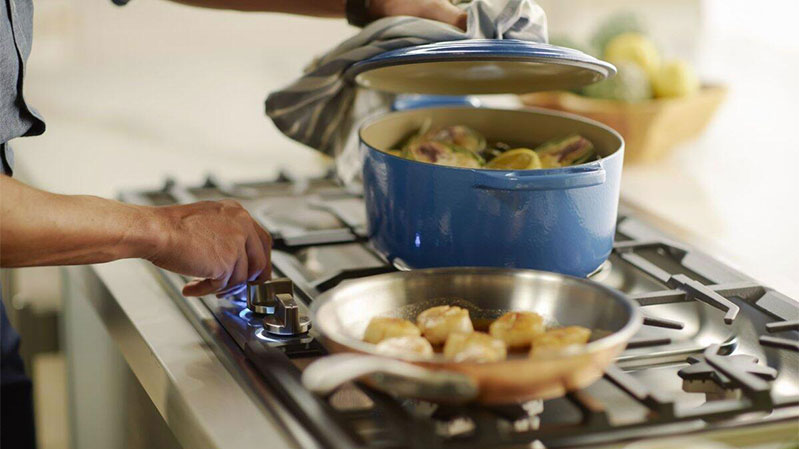
 Gas Range Stovetop
Gas Range Stovetop



